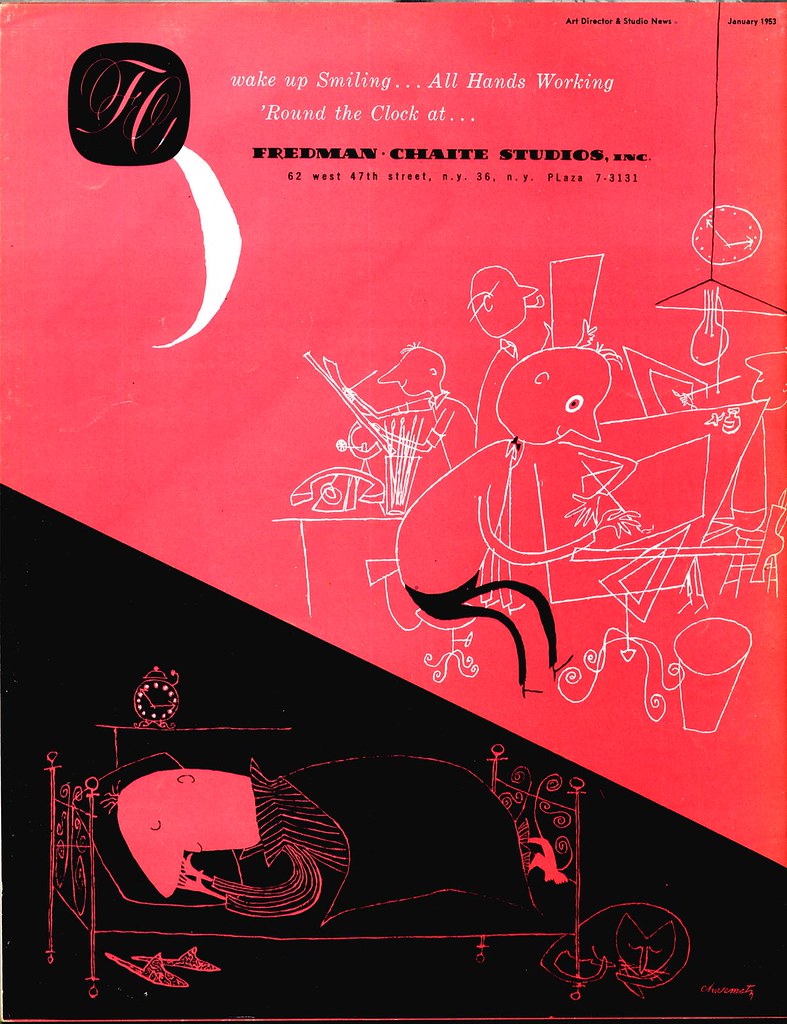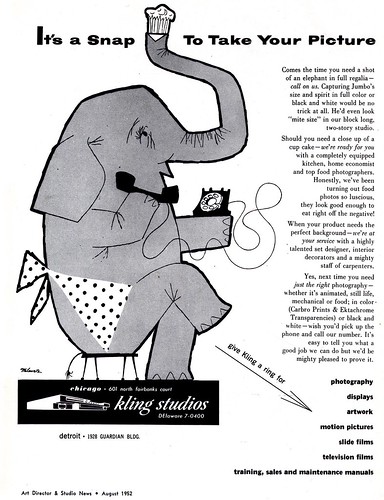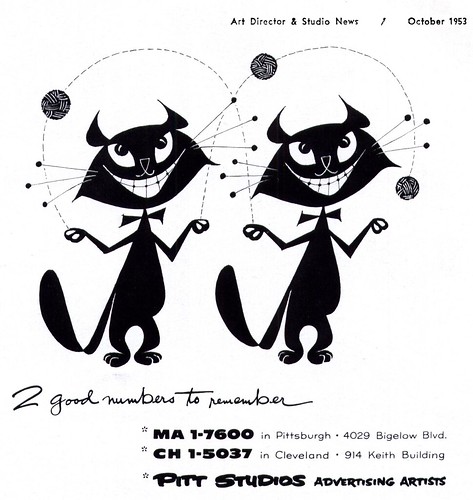
 I mentioned at the beginning of the week that none of the covers of these 1952/53 issues of AD&SN displayed realistic styles; that within the confines of the trade, art directors seemed to prefer to show each other what would have been hip new styles, while using illustrators with more traditional "realistic" styles when addressing the public through the print medium.
I mentioned at the beginning of the week that none of the covers of these 1952/53 issues of AD&SN displayed realistic styles; that within the confines of the trade, art directors seemed to prefer to show each other what would have been hip new styles, while using illustrators with more traditional "realistic" styles when addressing the public through the print medium.
Many of the ads for art studios seem to try to capture the attention of potential art buyers in the same manner. Cooper Studios seems to have been the exception (based on my limited sampling). Both Fredman-Chaite and Kling, most likely Cooper's biggest competitors, ran ads using cartoony, decorative styles.

What I find interesting about all this is it shows how slow the pace of change was - it would be several years before art directors and clients would begin pushing stylized, decorative illustration - almost a decade, in fact.

For the time being, realistic style illustrators could rest assured that they would be getting the lion's share of the choicest assignments.
No comments:
Post a Comment